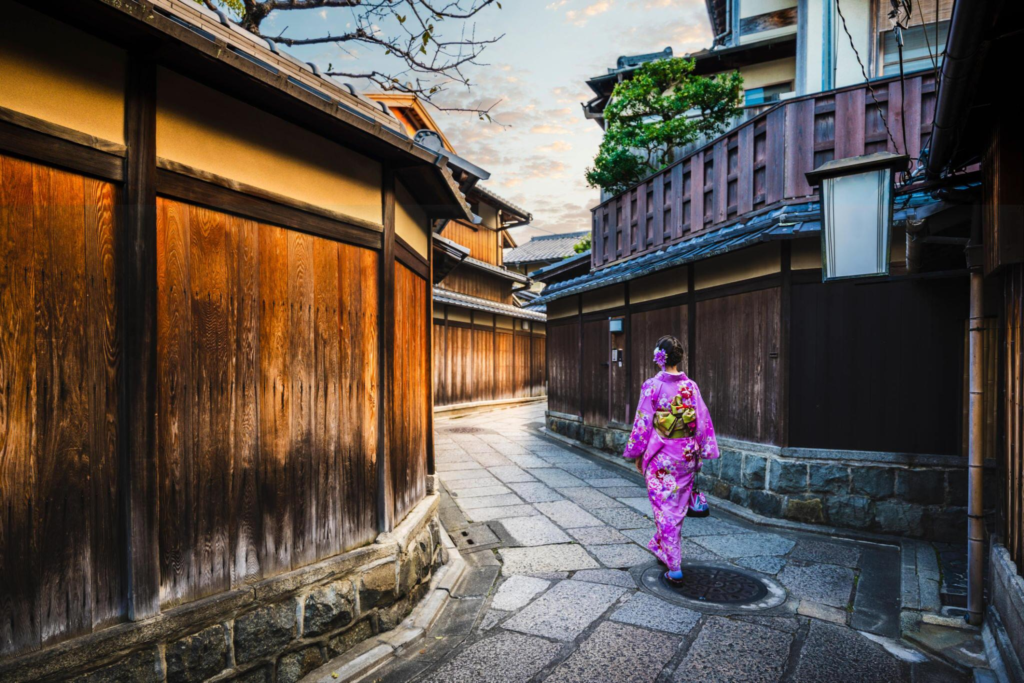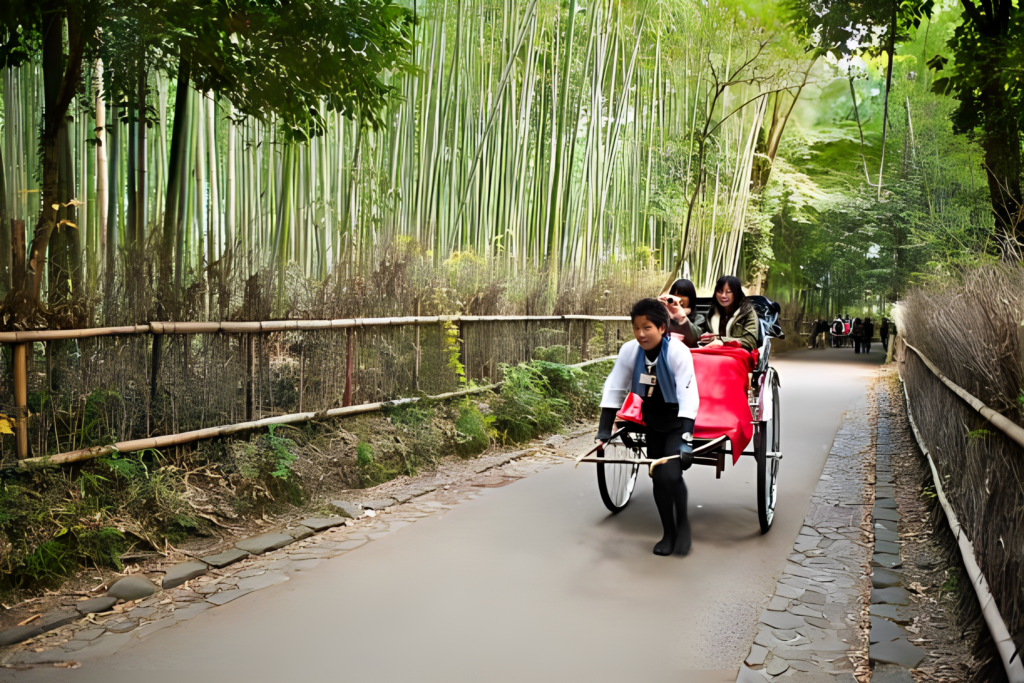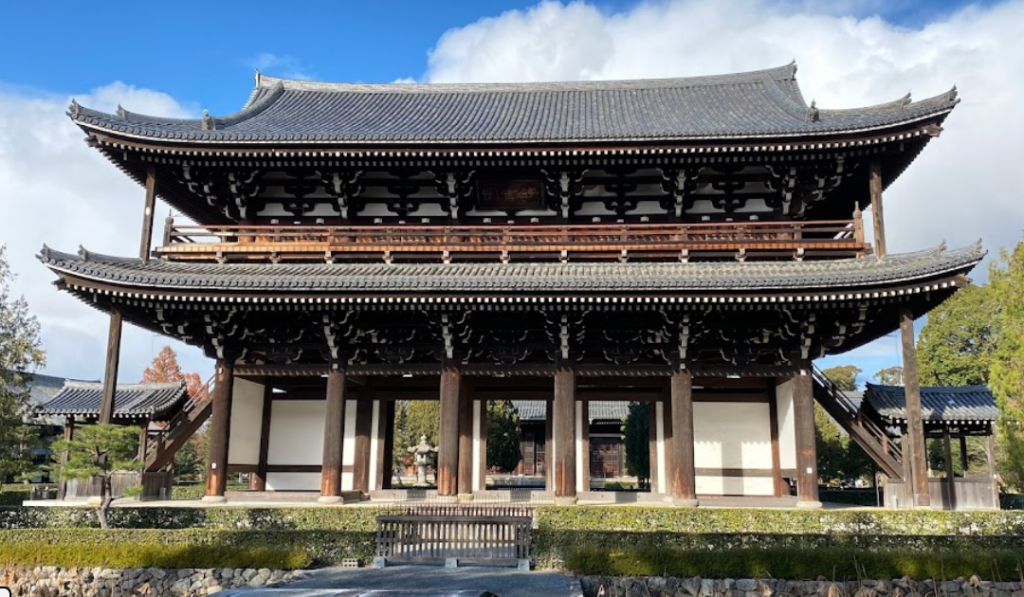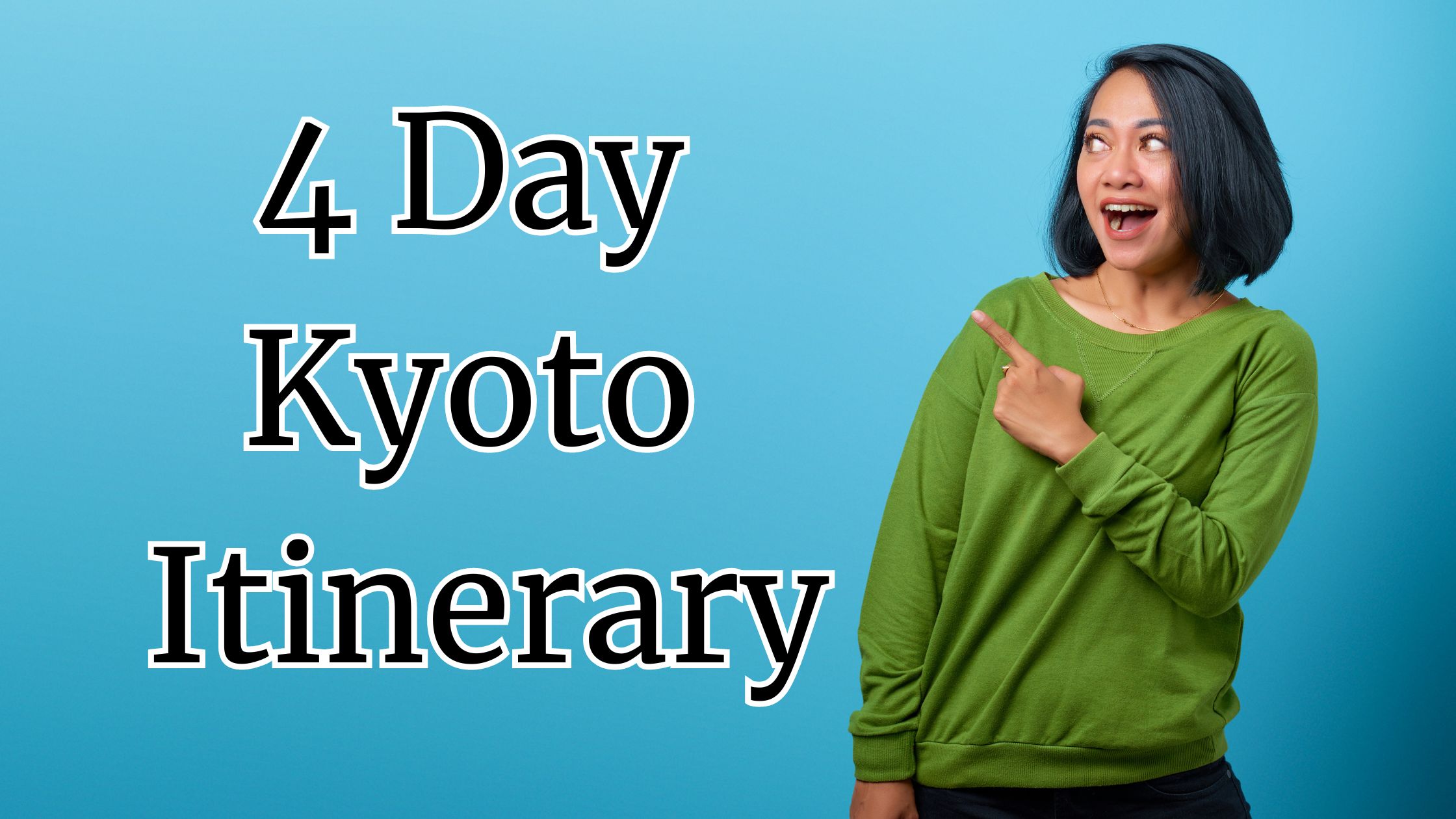Today, we set off on an enchanting 4 Day Kyoto Itinerary, Japan’s city of timeless tradition and beauty. Whether you’re an avid history buff, a lover of nature, or a culinary explorer, Kyoto offers an array of experiences that cater to every passion. Keep an eye out for unique insider tips that will make your Kyoto experience truly unforgettable. Don’t forget to hit like, subscribe for more travel stories, and come along as we reveal the captivating allure of Kyoto.
How to Get Around Kyoto
Kyoto’s transportation system perfectly encapsulates the city’s blend of tradition and modernity. The efficient Kyoto Municipal Subway and numerous bus lines make navigating the city a breeze. For a unique experience, rent a bicycle for about 15 USD per day. Alternatively, the Kyoto Sightseeing Pass, available for around 18 USD, offers unlimited travel for 2 days, making it an ideal choice for budget-conscious travelers.
Where to Stay in Kyoto
For the quintessential Kyoto experience, the Higashiyama district is your go-to area. Here, traditional guest houses or ryokans offer a taste of authentic Japanese hospitality, with prices ranging from 100 to 200 USD per night. For those seeking a more modern touch, luxury hotels in the central city area have rooms averaging from 150 to 250 USD per night.
Kyoto Airport Tips
Flying into Kansai International Airport, the gateway to Kyoto, plan to arrive with plenty of time to navigate this bustling hub. Utilize the airport’s efficient JR Haruka train service to get to Kyoto, with a one-way trip costing about 30 USD.
4 Day Kyoto Itinerary Overview
- Day One: A Blend of Spiritual Serenity and Cultural Exploration
- Day Two: A Journey Through Nature and History
- Day Three: An Adrenaline-Fueled Cultural Adventure
- Day Four: A Relaxing Yet Memorable Farewell to the City of Culture
Day One of 4 Days Kyoto Itinerary
Morning – Fushimi Inari Shrine
A mystical start at Fushimi Inari Shrine. Begin your Kyoto expedition with a visit to the iconic Fushimi Inari Shrine, renowned for its thousands of mesmerizing vermilion torii gates. As the sun peaks over the horizon, bathe in the ethereal glow that envelops this sacred site. The early morning serenity here offers a perfect moment for reflection and photography, making it a top attraction in any Kyoto travel guide.

Breakfast At Vermilion Cafe
At Vermilion Cafe, just a stone’s throw away from the shrine, indulge in a traditional Japanese breakfast. Opt for a healthy and wholesome set complete with miso soup, grilled fish, and seasonal sides, costing around 12 USD. Their matcha latte, a perfect fusion of creamy and bitter notes, is a must-try for any visitor.

Mid Morning – Kinkaku-ji
The golden splendor of Kinkaku-ji. Immerse yourself in the golden brilliance of Kinkaku-ji, the famed Golden Pavilion. This Zen Buddhist temple, blanketed in golden leaf, stands majestically against a backdrop of lush greenery and a tranquil pond. The entry fee of 4 USD is a small price for the breathtaking views and peaceful ambiance that await. This site is a jewel in Kyoto’s cultural crown and a highlight in any Kyoto sightseeing itinerary.

Lunch At Omen Kigi
At Omen Kigi, enjoy a leisurely lunch at this renowned eatery famous for its udon noodles. Savor the authentic flavors of Kyoto cuisine with a bowl of perfectly cooked noodles and a variety of fresh toppings, all for around 15 USD. This culinary experience is a must for those seeking to explore authentic Kyoto cuisine.

Afternoon – Gion District
Gion District’s historical elegance. Spend your afternoon wandering through the picturesque streets of Gion, Kyoto’s most famous geisha district. Here, time seems to stand still among the well-preserved machiya houses. A visit to the Yasaka Shrine, nestled in the heart of Gion, is a journey through centuries of Japanese heritage, and the experience is enhanced by the absence of an entry fee.

Evening – Maruyama Park and ChameLia Flower
Enchanting walk through Maruyama Park and tea ceremony experience. As dusk sets in, make your way to the serene Maruyama Park, a haven of natural beauty and tranquility located adjacent to the Gion District. This park is renowned for its seasonal beauty, with cherry blossoms in spring and richly colored foliage in autumn. Strolling through the park as the evening light filters through the trees is a magical experience, offering a moment of peace in the heart of the city.

A tea ceremony at ChameLia Flower before heading to dinner. Immerse yourself in one of Kyoto’s most revered traditions, a Japanese tea ceremony. Located within Maruyama Park, ChameLia Flower offers an authentic tea ceremony experience for around 20 USD. This intimate encounter with Japanese culture allows you to appreciate the art of tea, where every movement is a gesture of hospitality and respect. You’ll learn the history of the tea ceremony and the philosophy behind each step, making it a must-do for those seeking to dive deep into Japanese heritage and customs.

Dinner At Ganko Ryori
After your serene park visit and enlightening tea ceremony, it’s time to indulge in a traditional kaiseki dinner. Ganko Ryori, known for its exquisite dishes and elegant atmosphere, provides the perfect setting to reflect on the day’s adventures. Each course of the kaiseki meal is a masterpiece showcasing the finest seasonal ingredients, prepared with utmost care and attention to detail. Expect to pay around 50 to 100 USD per person for this luxurious dining experience, a worthy investment for a memorable and authentic taste of Kyoto’s culinary artistry.
Insider Tip
As night falls, meander down the atmospheric Pontocho Alley. This narrow lane lined with intimate bars and traditional tea houses offers a glimpse into the nightlife of old Kyoto. It’s the perfect spot to experience the city’s vibrant yet traditional nightlife, rounding off an unforgettable day in one of Kyoto’s must-visit spots.
Also Read: 3 Days in Paris Itinerary
Day Two of 4 Days Kyoto Itinerary
Morning – Arashiyama Bamboo Grove and Tenryu-ji Temple
Kick off your second day with a visit to the mesmerizing Arashiyama Bamboo Grove. Walking through this towering bamboo forest with the sun casting a soft glow through the dense green stalks is a surreal experience. Capture this moment in photos, a must for any Kyoto adventure diary. This enchanting walk is free and offers a tranquil start to the day. After the grove, explore Tenryu-ji Temple, a World Heritage Site. The temple’s Zen gardens are a testament to Japanese landscape art, with an entry fee of around 8 USD. This serene location is not just a temple but a journey through the spiritual and natural beauty of Japan.

Breakfast – Arashiyama Yoshimura
At Arashiyama Yoshimura, near the Bamboo Grove. Enjoy a traditional Japanese breakfast with a view of the Katsura River. A comforting bowl of soba noodles will cost around 10 USD, a perfect meal to fuel your morning explorations.

Mid-Morning – Nijo Castle exploration
Head to Nijo Castle, a stunning example of feudal-era architecture and a symbol of the Tokugawa shogunate’s power. The castle’s opulent rooms and expansive, meticulously maintained gardens are a sight to behold. The entrance fee of about 6 USD is a small price for the rich historical experience that awaits.

Lunch at Nijo Castle tea house
Within the castle grounds, find a quaint tea house offering light meals and snacks. A bento box lunch here is not just a meal; it’s an experience, costing around 15 USD.

Afternoon – Nanzen-ji Temple.
Stroll down the famous Philosopher’s Path, a picturesque walkway that follows a cherry tree-lined canal. This path, especially beautiful during cherry blossom season, leads to Nanzen-ji Temple. Exploring this expansive Zen temple complex, with its massive Sun Moon gate and beautiful gardens, is a peaceful experience with a small entrance fee for select subtemples or gardens.

Evening – Illuminated Kiyomizu-dera Temple visit.
As the night falls, visit the iconic Kiyomizu-dera Temple, famous for its wooden stage that juts out over the hillside. The temple often hosts special nighttime illuminations, creating a magical and almost ethereal atmosphere. The entrance fee for these special openings is around 10 USD. Standing on the temple’s veranda overlooking Kyoto bathed in the soft evening light is a truly unforgettable experience.

Dinner At Okita
This local favorite specializes in tempura and udon. A hearty bowl of their signature dish will cost around 15 USD, offering a delightful end to your day’s culinary journey.
Insider Tip
After the temple visit, wander through the narrow lanes of the surrounding Higashiyama District. This area, with its traditional shops and cafes, is perfect for picking up unique souvenirs and experiencing Kyoto’s nightlife in a historic setting.
Day Three of 4 Days Kyoto Itinerary
Morning – Kurama and Kibune
Start your day with an invigorating hike between the mountain villages of Kurama and Kibune. This trail offers a blend of natural beauty and mystical legend, leading you through dense forests and past ancient temples. The hike, taking about 2 to 3 hours, is a moderate challenge but rewards with breathtaking views and a sense of accomplishment. The Kurama Temple, halfway through the hike, charges a small entry fee of around 3 USD, offering a perfect blend of physical exertion and spiritual exploration.

Breakfast At Kurama An
Before embarking on your hike, fuel up with a hearty breakfast at the nearby Kurama An for around 15 USD. Enjoy a traditional Japanese breakfast set that not only satisfies the palate but also prepares you for the day’s adventure.
Mid-Morning -Thrilling river rafting in Hozugawa
After your hike, head to the Hozugawa River for an exhilarating river rafting experience. This adventure, costing around 40 USD per person, takes you through rapids and serene stretches of the river, offering a unique perspective of Kyoto’s lush landscapes. It’s an adrenaline-pumping activity that’s perfect for adventure seekers.

Lunch at Arashiyama area
Post-rafting, enjoy a well-deserved lunch in the Arashiyama area. Indulge in a local specialty like Kyoto-style sushi, with meals averaging around 20 USD. This culinary stop is a delicious way to recharge before your afternoon activities.

Afternoon – Exploring the heart of Kyoto on bike
Rent a bike, about 15 USD per day, and embark on a self-guided tour through Kyoto’s heart. Cycle through the picturesque streets, visiting hidden gems that are often missed by tourists. This is your chance to explore Kyoto at your own pace, discovering quaint cafes, artisan shops, and lesser-known temples.
Evening – Kyoto Tower and nighttime city views.
Cap off an exhilarating day with a visit to Kyoto Tower. The tower’s observation deck, with an entrance fee of about 7 USD, offers stunning nighttime views of the city. It’s a serene way to reflect on your day’s adventures, looking out over the illuminated cityscape.

Dinner At Pontocho Alley.
End your day with a dinner in Pontocho Alley, known for its vibrant dining scene. Choose from a variety of restaurants offering everything from traditional kaiseki meals to modern Japanese fusion cuisine. A delightful dinner here will cost around 30 to 50 USD, providing a perfect culinary conclusion to your day.
Insider Tip
For those still seeking excitement, consider joining a night walking tour in Gion. These tours, often led by knowledgeable locals, offer insights into Kyoto’s rich history and a chance to possibly spot a geisha or maiko in their traditional attire.
Day Four of 4 Days Kyoto Itinerary
Morning – Tofuku-ji Temple
Begin your day with a tranquil Zen meditation session at Tofuku-ji Temple, one of Kyoto’s largest Zen temples. This early morning activity offers a unique opportunity to engage with Japanese Zen practices, providing a serene start to your day. The meditation session, often led by a Buddhist monk, is not only a spiritual experience but also a chance to find inner peace amidst your travels. The session might cost around 10 to 15 USD and usually requires advanced booking.

Breakfast at Tofuku-ji.
After your meditation, enjoy a relaxing breakfast at one of the quaint cafes near the temple. A light meal and a cup of artisanal coffee will cost around 10 USD, offering a calm moment to reflect on your journey.
Mid-Morning – Kyoto Imperial Palace Park
Next, head to the Kyoto Imperial Palace Park, a sprawling green space surrounding the historic Kyoto Imperial Palace. Strolling through this lush park is free and provides a picturesque setting to appreciate Kyoto’s natural beauty. The park, with its well-manicured gardens and tranquil ponds, is a perfect spot for leisurely walks and photography.

Lunch At Demachi Futaba
Savor a traditional Kyoto lunch at Demachi Futaba, known for its mochi and other Japanese sweets. Their lunch sets, combining savory and sweet, offer a delightful taste of local cuisine for around 20 USD.
Afternoon- Nishiki Market exploration and souvenir shopping
Spend your afternoon at the vibrant Nishiki Market, a bustling hub of Kyoto’s culinary scene. This is the perfect place to try various local snacks and dishes, ranging from fresh sushi to Kyoto-style pickles. It’s also an ideal spot for picking up unique souvenirs, from handcrafted goods to specialty foods. Exploring this market is a feast for the senses and a must-do for any Kyoto visitor.

Evening – Scenic walk along the Kamo River.
As the sun sets, take a scenic walk along the Kamo River, a favorite pastime for locals and visitors alike. The riverbanks come alive in the evening with people enjoying casual strolls, impromptu music performances, and the relaxing ambiance. It’s a fitting end to your Kyoto trip, offering one last chance to soak in the city’s charm and beauty.
Dinner At Kiyamachi area
Head to the lively Kiyamachi area. This district is filled with a wide range of restaurants offering everything from traditional Japanese fare to international cuisine. Enjoy a memorable meal for around 30 to 50 USD, celebrating the end of your Kyoto journey.
Insider tip
To truly commemorate your Kyoto experience consider visiting a local photo studio in the evening to dress up in traditional Japanese attire such as a kimono or yucata capturing this moment in a professional photo shoot costing around 50 to 100 USD is not only fun but leaves you with a unique and personal souvenir of your time in Kyoto.
Best time of year to visit
Kyoto, Japan – The best time to visit Kyoto is during the Spring (March to May) and Autumn (October to November) months. Spring in Kyoto is famous for its stunning cherry blossoms or Sakura, which typically bloom in late March or early April. This season brings the city to life with vibrant colors and festive hanami or flower-viewing parties. Autumn is equally captivating with the changing colors of the leaves creating a picturesque landscape of red, orange, and yellow hues, particularly in Temple Gardens and along the Philosopher’s Path.
Both seasons boast mild and comfortable temperatures, making them ideal for exploring the city’s rich cultural heritage and natural beauty. However, these are also peak tourist seasons, so expect larger crowds and higher accommodation prices. For a quieter experience, consider visiting in the late Autumn or early Winter months when the city is less crowded, and the scenery is still beautiful.
As we bid farewell to Kyoto, we carry with us unforgettable memories from this 4-day journey of awe and wonder. If our Kyoto adventure has inspired you, hit like, subscribe for more, and share your thoughts in the comments. Don’t miss our exciting explorations of Osaka and Tokyo too. Stay adventurous, and see you on our next journey.
Saftey Tips for 4 Days Kyoto Trip
Kyoto is generally a safe city for travelers, but it’s always wise to take precautions to ensure a smooth and secure trip. Here are some safety tips for traveling in Kyoto:
- Crime Rates:
- Kyoto has relatively low crime rates, but it’s essential to stay vigilant and aware of your surroundings.
- Petty crimes like pickpocketing can occur in crowded areas, so keep an eye on your belongings, especially in crowded tourist spots and public transportation.
- Traffic Safety:
- Japan drives on the left side of the road, so be cautious when crossing streets.
- Follow traffic rules and use pedestrian crossings.
- Natural Disasters:
- Japan is prone to earthquakes. Familiarize yourself with emergency procedures at your accommodation.
- Stay informed about weather conditions, especially during typhoon season (June to October).
- Cultural Sensitivity:
- Respect local customs and traditions. For example, it’s customary to bow slightly when greeting someone in Japan.
- Be mindful of photography restrictions in temples and shrines.
- Public Transportation:
- Public transportation in Kyoto is generally safe. Be aware of rush hours when using trains and buses.
- Keep an eye on your belongings in crowded areas and use coin lockers for luggage at train stations if needed.
- Health and Safety:
- Carry any necessary medications, and be aware of the location of medical facilities in case of emergencies.
- Stay hydrated, especially during hot and humid weather.
- Language Barrier:
- While English may not be widely spoken, many people in tourist areas and services are accustomed to dealing with international visitors.
- Consider learning a few basic Japanese phrases or use translation apps to facilitate communication.
- Cash Handling:
- Japan is a cash-based society, and credit cards may not be accepted everywhere. Carry enough cash and use ATMs in major convenience stores or banks.
- Be cautious at ATMs and ensure you are in well-lit, secure areas.
- Emergency Numbers:
- Familiarize yourself with local emergency numbers. In Japan, the emergency number for police is 110.
- Accommodation Safety:
- Choose reputable accommodations. Read reviews, and consider the security measures in place at hotels or guesthouses.
- Food and Drink Safety:
- Food safety standards in Japan are generally high, but be cautious about raw or undercooked foods.
- Stay hydrated, especially in the summer, and choose reputable places to eat and drink.





